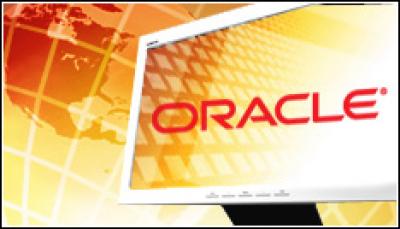Oracle Adds To Governance And Compliance Apps

Oracle has beefed up its enterprise regulatory portfolio with new offerings for governance, risk and compliance
Oracle is strengthening its regulatory portfolio after it released a new application for governance, risk and compliance, as well as updating an existing product.
Specifically, Oracle released the Oracle Enterprise Governance, Risk, and Compliance Manager (Oracle Enterprise GRC Manager), and a new version of Oracle Enterprise Governance, Risk, and Compliance Controls (Oracle Enterprise GRC Controls).
Oracle feels the new releases are designed to provide an end-to-end solution to organisations’ GRC needs, and it aims to create a closed-loop approach to regulatory compliance, risk management and controls automation.
Oracle Enterprise GRC Manager, which is built on Oracle’s Fusion Middleware 11g stack, allows administrators to embed accountabilities for risk management and control across an enterprise. By utilising a single system, Oracle says, the Enterprise GRC Manager cuts down on overlapping tasks, as well as allowing independent risks and compliance initiatives to be more efficiently managed. In turn, this reduces the cost of auditing and governing change management processes on enterprise controls.
Oracle Enterprise GRC Controls monitor automated controls in enterprise applications, looking for violations and anomalies in transactions. The application includes new versions of Oracle Enterprise Transaction Controls Governor (Oracle Enterprise TCG), which utilises statistical logic to uncover suspect transactions, and Oracle Application Access Controls Governor (Oracle AACG), which graphically detects segregation-of-duties conflicts and advises on issues, remediation plans and potential impact.
“For many organisations, the greatest GRC challenge is creating a consolidated view of compliance, risk and internal controls,” Chris Leone, group vice president of Oracle applications development, wrote in a statement tied to the release. “Oracle Governance, Risk, and Compliance application suite addresses this challenge by providing a complete, open, and integrated platform that provides the flexibility needed to efficiently and intelligently manage GRC programs.”
While the economic recession forced many software companies to tighten their production pipeline in 2009, Oracle continued to release a variety of products at a fairly steady clip. Back in September Oracle announced the launch of new capabilities for midsize businesses through its Oracle Accelerate program, including new Accelerate Solutions, Oracle Business Accelerators, financing options and deployment methods.
Besides focusing on midsize businesses – a trend also embraced by competitors such as SAP – Oracle has maintained its traditional focus on the large enterprise market. Over the summer Oracle introduced Fusion Middleware 11g, an upgrade to its middleware platform that added social networking, as well as layers of operational insight and automation.
In a boost to Oracle’s attempts to offer its customers increasingly end-to-end systems, the company also moved in April to acquire Sun Microsystems, in a deal worth roughly $7.4 billion. That deal, which would allow Oracle to more fully use Java and Solaris in its products, is currently under scrutiny by antitrust officials – even as Sun continues to bleed cash at a rate of $100 million per month.
Oracle CEO and founder Larry Ellison told an audience at the Churchill Club in September that his company’s goal is to beat IBM in the systems arena.
“We have a deep interest in the systems business,” Ellison said. “We’ve already beaten IBM in software. Now we want to beat them in systems.”